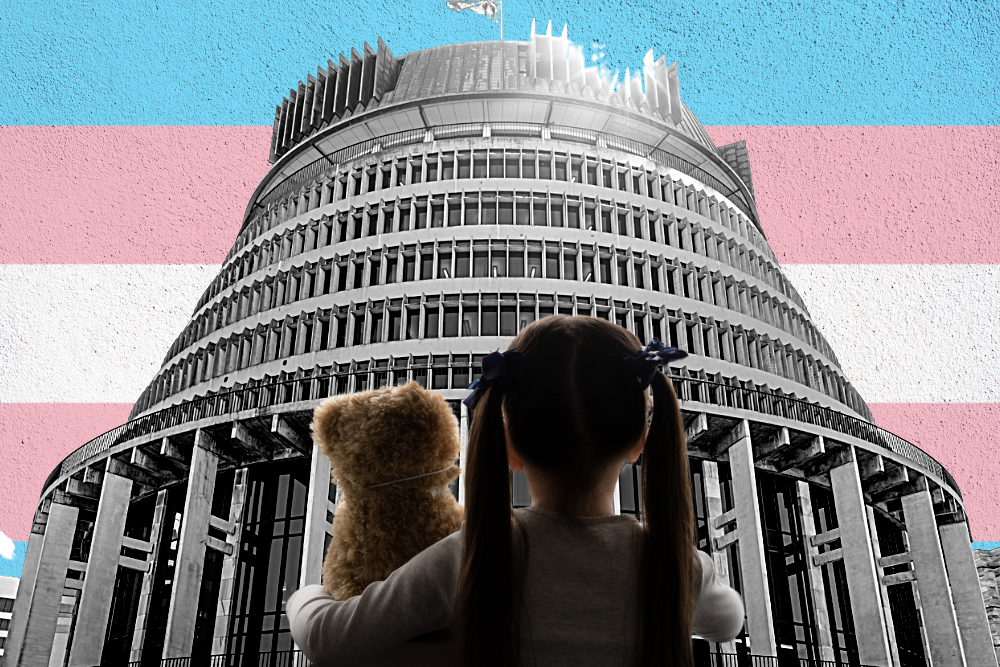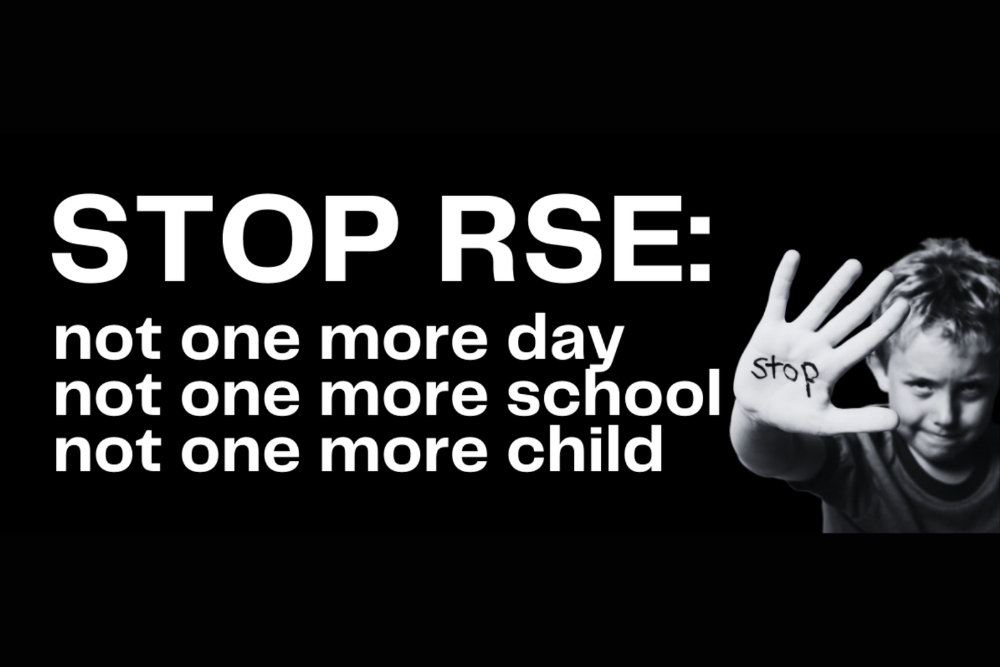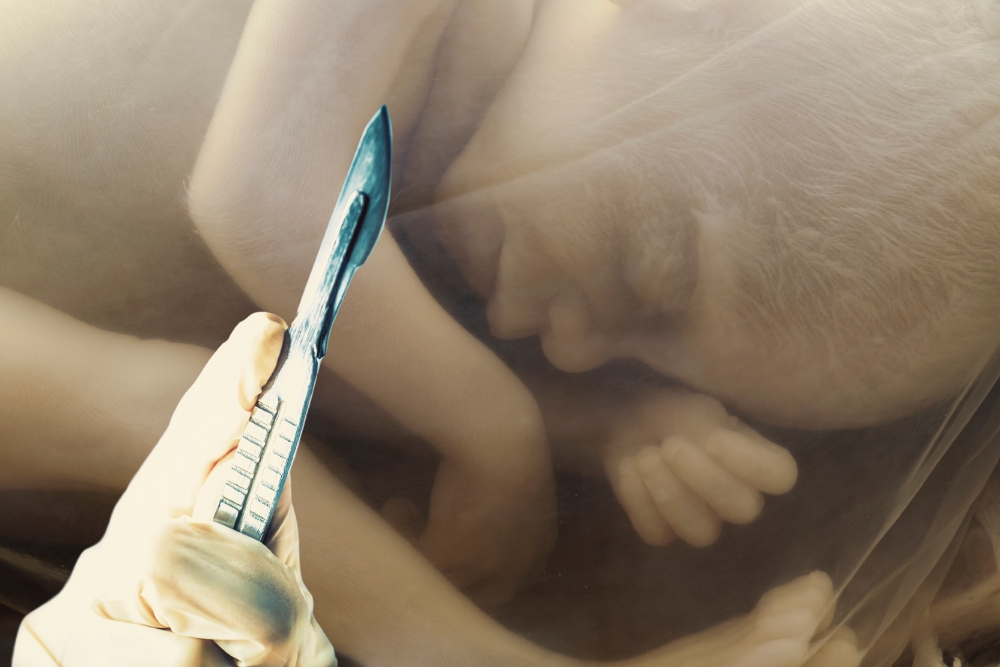By Laura López
In normal times, there could be nothing more boring than the glossary of an official Ministry of Education document. But these are not normal times.
The definitions section of any document is important, because it gives an insight into the fundamental worldview of the authors. A glossary shows the assumptions that the authors make, the ideas they hold to be self-evident truths, definitional, unquestionable.
Few parents will have read the glossary that’s included in the New Zealand Relationships and Sexuality Education (RSE) curriculum (for both Years 1 to 8 and Years 9 to 13). Fewer still will have fully understood the glossary and its implications. The glossary reveals the new RSE curriculum’s roots in an unusual worldview known as gender identity theory, or gender ideology.
Gender ideology redefines what it means to be male or female. Being female is redefined as feeling that you fit female stereotypes. Being male is redefined as feeling that you fit male stereotypes. Around the world, schools that teach this belief system have seen a dramatic rise in the number of students who identify as trans, sometimes with tragic consequences.
This damaging process is already well underway in New Zealand. We are following in the footsteps of the United States, where, for example, nearly 10% of students in one urban school district self-identify as trans. In the US overall, an astonishing 5.1% of young adults now identify as trans, marking them as candidates for drastic medical and surgical interventions. Growing evidence suggests that this ‘trans wave’ is due to social influences from the media, peers, social media, and schools.
While many trans activists now acknowledge that social influences have played a role in the trans wave, they claim that the trans wave is beneficial to youth mental health. However, this claim is based on flawed evidence. Neither medical nor social gender transition have been proven to improve mental health. In fact, the trans wave has occurred in concert with a sharp deterioration in youth mental health.
Neither medical nor social gender transition have been proven to improve mental health. In fact, the trans wave has occurred in concert with a sharp deterioration in youth mental health.
While the Ministry of Education has been promoting gender ideology for some time, not all New Zealand schools are teaching this belief system. Until recently, RSE lessons at my own children’s school have been based on real-world biology. However, our school’s principal recently introduced the Ministry’s official RSE glossary into our school’s teaching materials (as a reference for teachers). I decided to read the glossary closely, and was disturbed by what I found.
Gender ideology is embedded into the RSE curriculum’s glossary in a subtle way that appears designed to fly under the radar. Unless you are familiar with this worldview, the glossary may seem a bit strange, but harmless. It is not.
In past articles, I’ve looked at the blatantly harmful RSE content that’s being taught in some New Zealand schools. In this article, I want to show you how to recognise the more insidious ways in which gender ideology is embedded into the RSE curriculum. This will help you to recognise whether your own school is teaching this belief system, and understand what impact this could have on your children.
The underlying messages sent by the RSE curriculum are that sex is arbitrary and changeable, and that whether you are ‘really’ male or female depends on your subjective feelings. Let’s look closely at how these messages are embedded into the RSE glossary.
Key definitions in the RSE glossary
Sex and Sex Characteristics
It’s frankly embarrassing that New Zealand’s sexuality education curriculum lacks an accurate, or even coherent, definition of sex.
The RSE glossary defines sex as:
The biological sex characteristics of an individual (male, female, intersex).
…and it defines sex characteristics as:
A person’s physical features relating to sex, including genitalia and other sexual and reproductive anatomy, chromosomes, hormones, and secondary physical features emerging from puberty.
Notice that these definitions are circular. Effectively, the glossary defines sex characteristics as “A person’s physical features relating to their biological sex characteristics”. And it defines sex as “The biological physical features relating to sex”.
The cause of this absurdity is that the RSE glossary’s definition of sex is incorrect. The correct definition of sex, as understood by biologists, is provided by Encyclopedia Britannica:
The sum of features by which members of species can be divided into two groups—male and female—that complement each other reproductively.
There is a simple reason that human males and females complement each other reproductively. The male sex produces sperm, and the female sex produces eggs (see this article and this article for more detailed explanations). It requires a sperm and an egg to create a baby.
In other words, only males can become fathers, and only females can become mothers. There is no third type of biological parent, and so there are only two sexes. The RSE glossary divorces sex from this fundamental basis in reproduction, and is thus profoundly unscientific and misleading.
Gender activists promote confusing and inaccurate definitions of the word sex in order to convince children that sex is a continuum, and can be genuinely changed. This is, of course, incorrect.
Sex assigned at birth
The phrase sex assigned at birth aims to persuade children that sex can be changed. The suggestion is that a doctor assigned you your sex. This implies that if you don’t like the sex you were assigned, you can simply ask a doctor to reassign you a new one. This is, of course, false.
The RSE glossary defines sex assigned at birth as follows:
All babies are assigned a sex at birth, usually determined by a visual observation of external genitalia.
This is a really misleading thing to tell children. In reality, sex is determined biologically, usually at conception. A midwife or doctor observes the child’s sex (nearly always accurately), and records it on their birth certificate for legal purposes.
The phrase sex assigned at birth gives the false impression that someone’s sex is arbitrary and changeable. While, thanks to recent legislation, the sex marker on someone’s birth certificate can be arbitrarily changed, their actual biological sex cannot.
Obviously, teaching children that they can change their sex will encourage some of them to identify as trans. I do not want my children to be taught this lie.
Gender
Gender activism is built on deceptive word games. As mentioned earlier, gender activists want to redefine the very concepts of male and female, by teaching children that being a girl or a boy is not about biology. Instead, a girl is redefined as someone who feels that they fit female stereotypes. And a boy is redefined as someone who feels that they fit male stereotypes. As philosopher Kathleen Stock explains in her critically acclaimed book Material Girls, the word gender is central to this attempted redefinition of male and female.
Until recently, most non-academics understood the word gender as a polite euphemism for biological sex. It’s only recently that gender activists have popularised the use of gender as shorthand for gender identity (i.e. a subjective feeling of being male or female, based on your affinity with sex stereotypes).
In the gender word game, it is your gender (identity) that makes you male or female. Your biological sex is held to be irrelevant to whether you are a man or a woman (or a boy or a girl). This redefinition is part of an attempt to replace sex with gender identity in nearly every aspect of life.
The gender word game is central to the bizarre misinformation spread by gender activist groups, such as the idea that men can menstruate.
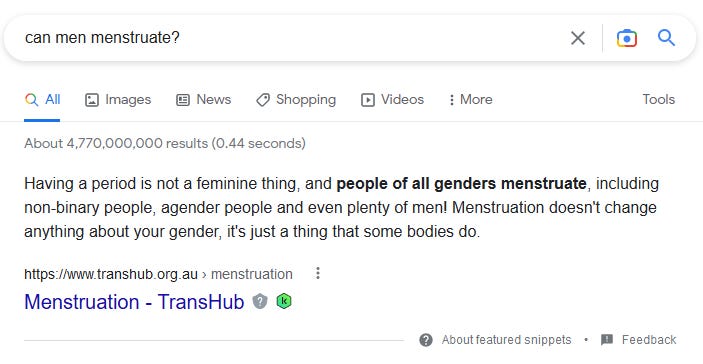
The idea that men can menstruate, considered laughable by almost everyone in just 2019, is now being taught in New Zealand schools. In fact, the Going with the flow multimedia resource (which was funded by the Ministry of Education) instructs teachers to tell students who believe otherwise that they are simply wrong. It suggests using a quiz to publicly expose and re-educate any students who show signs of wrongthink (i.e. believing in biological reality).
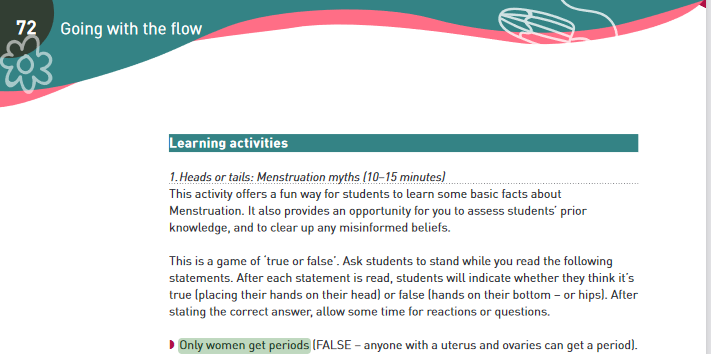
This is why it’s disturbing to see the gender activist definition of gender turn up in the RSE curriculum’s glossary. In fact, the glossary omits to mention that the word gender can have several different meanings, and provides only the activist definition:
Gender is an individual identity related to a continuum of masculinities and femininities.
Using gender as shorthand for gender identity in this way is inherently misleading. Some students and teachers are likely to misunderstand the word gender as meaning biological sex, because this word is still commonly used in this sense. A clear and transparent curriculum would say gender identity rather than gender, when this was the intended meaning. An honest curriculum would also teach children that the word gender can have several meanings, and that they need to be wary when it is used ambiguously.
As we will see in the following section, defining gender as gender identity helps the RSE curriculum’s authors to sneakily replace sex with gender identity, while disguising the radical nature of this shift.
Sexual orientation
The RSE glossary defines sexual orientation as:
A person’s sexual identity in relation to the gender or genders to which they are attracted.
Notice that the glossary refers to attraction to the same gender, and not to the same sex. This is a crucial difference. Remember that the glossary defines gender as a subjective feeling of being male or female. The glossary thus defines a lesbian, for example, as a woman who is attracted to people who feel female. This differs sharply from the commonly-understood and scientific definition of a lesbian as a woman who is attracted to people who are female (i.e. other women). Twisting words in this way is likely to be deeply confusing for young children.
Arcane as it might seem, the activist redefinition of ‘sexual orientation’ as ‘gender orientation’ has had serious consequences. As this disturbing BBC News article reports, young lesbian women now experience pressure to date and have sex with biological men, if these men claim to have female gender identities. In highly ‘woke’ subcultures, excluding these individuals from your dating pool is considered a “transphobic” “genital preference”. This has led to lesbians being banned from dating apps for stating that they are exclusively same-sex attracted.
Gay and lesbian rights advocates have described redefining same-sex attraction as same-gender-identity attraction as “offensive” and “homophobic”. They argue that this revisionist definition is “unacceptable… since it redefines and negates LGB sexual orientation”.
Research affirms that sexual orientation is based on sex, not on gender identity. People are attracted to real human beings, with actual physical bodies – not to disembodied gendered souls. The belief that declaring a new gender identity will open up new romantic prospects often leads to frustration and disappointment, born of frequent rejection. Unfortunately, a disproportionate number of people identifying as trans are on the autism spectrum, making them susceptible to believing polite lies.
In addition to being incorrect, the RSE glossary’s redefinition of sexual orientation has bizarre and troubling implications. Imagine that a heterosexual male student experiences attraction to a particular woman. Outwardly, she appears entirely feminine. However, unbeknownst to him, this woman has a subjective feeling of being male, and thus a male gender identity. Does this mean that the male student has suddenly turned gay, without even realising it?
The underlying message sent by the RSE glossary’s redefinition of sexual orientation is that your gender identity overrides your sex. Not coincidentally, this false belief is very much in keeping with the teachings of gender ideology.
Ally
The RSE glossary defines an ally as:
Someone who considers themselves a friend and active supporter of the LGBTQI+ community.
This definition is misleadingly incomplete. The word ally is highly politically loaded. Allyship is defined in the Social Justice Encyclopedia as follows:
Allyship is understood as a subordinate and supportive role within a group of activists for an identity group seen as marginalized that is held by someone who has an identity seen as privileged.
As the Social Justice Encyclopedia documents, the requirements of allyship include “shutting up and listening” and “submitting meekly to criticisms and slurs based on their own identity and perceived deficiencies”.
The RSE glossary thus implies that providing friendship and support to LGBTQ people requires children to become obedient political activists.
The bigger picture
As we’ve seen, the aim of the new RSE curriculum is not to promote acceptance of diversity, as its authors might pretend. Its ambition is to instil a radical new worldview that redefines the very concepts of male and female. It forms a part of a broader political project, which has already been highly successful in gaining influence within our Public Service and the mainstream media. As has occurred overseas, the architects of this movement have failed to be transparent and upfront with the general public about their goals. This is unsurprising, given that these goals are overwhelmingly unpopular with the public.
The RSE curriculum is not science-based. It lacks an accurate or coherent definition of sex, and it conspicuously lacks definitions of male, female, boy, girl, man, or woman. It attempts to convince children that sex is something arbitrary and changeable. And it privileges ‘gender identity’ above biological sex. These messages are likely to further contribute to the huge rise in the number of young New Zealanders who are confused and distressed about their gender identities.
The new RSE curriculum puts teachers in a very awkward position. Asking them to teach material that is false and politically contentious breaks the crucial bonds of trust between teachers, students, and parents. This makes it harder for teachers to successfully educate students in the other important aspects of the RSE curriculum, and in other subjects as well.
Many teachers are being asked to teach materials that go against their personal beliefs, or that just feel wrong. Teachers with a solid background in biology will quickly recognise the absurdity of the curriculum’s definition of biological sex. Many gay or lesbian teachers will also be uncomfortable with the curriculum’s erasure of same-sex attraction. These teachers need to know that they have your support in pushing back against the new RSE curriculum. If you have children at school, take the time to make your views known to your school’s board and principal, and your children’s teachers.
The UK health and education systems have started slowly moving away from the anti-scientific beliefs promoted by powerful trans lobby groups. It’s time for New Zealand to follow in their footsteps. Together, we can find a more humane, reality-based, and effective way of accepting our children’s individual differences.
New Zealand parents can find information on how to ask schools to exempt their children from lessons that encourage trans identification here.

